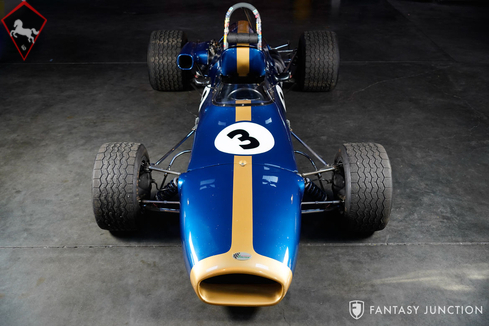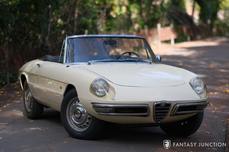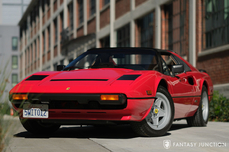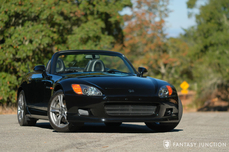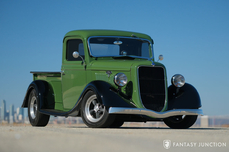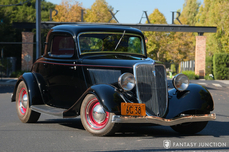Brabham other 1600cc DOHC 4-Cylinder 1969
Allgemeine Beschreibung :
1969 Brabham BT29
Chassis No. BT-29-28
Among the finest constructors of the golden age of motorsports racing, Brabham set the standard for many competitors that would emerge during this period of exemplary driver courage and trackside-driven engineering innovations. Officially known as Motor Racing Developments Ltd., a UK company founded in 1960 by Australian Jack Brabham and Ron Tauranac (the B and T initials designated for each chassis), the team would develop a series of historically important racecars leading up to the BT18 model. In 1966, a remarkable six years after opening their shop, Jack Brabham piloted the BT18 to win his first of four Constructors’ World Championships. An amazing achievement for any driver piloting a car of his own construction.
After BT18 construction, Brabham would go on to become the largest manufacturer of open-wheel race cars, building more than 500 cars by 1970 including race cars that won championships in Formula Two and Formula Three, competed at the Indy 500, and in Formula 5000 racing. Prodigious innovators, Brabham cars were pioneers of carbon brakes, hydro-pneumatic suspension, and in-race refueling. Brabham also developed cars with unique ground effects, clever cooling systems, and were one of the earliest pioneers of turbocharging.
Originally derived for the 1969 racing season, a new range of single seaters established the BT28 (F3), the BT29 (FB), and the BT30 for F2 classification races. All three cars utilized newer, more sophisticated space-frame construction, which would prove to be labor intensive to build, delaying output for the season. Utilizing conventional suspension and outboard brakes, Brabham produced 29 BT29s for the American Formula B and C racing series. The 88” wheelbase B29 included tubular space-frame chassis, adjustable suspension with coil-over shocks, and Brabham magnesium uprights, among just a few of the many innovations built into these highly competitive cars.
According to written correspondence addressed to the current owner from The Brabham Registry (included with this car) BT28-29 was originally owned by Fred Opert Racing. It is known to have participated in races in 1971-1972 driven by Gary Gove. While racing at Laguna Seca in 1972, Gove experienced a lower wishbone failure between turn 1 and 2, resulting in an abrupt ending against an embankment. After the incident, Gove retained the damaged car for several years. In 1987/88 Gove invited the Brabham Registry to visually inspect the car and verify the chassis number. By 1989, the frame and assorted parts were sold to Michael Rigby. During restoration, it is believed Rigby combined elements of another BT29 which he had purchased to complete BT-29-28. In 1991, Joe Maria purchased the car followed by the next owner’s purchase in 1995. After 1995, as shown in the logbook included with the car, BT-29-28 successfully participated in numerous vintage racing events spanning nearly 30 years including the 2023, and 2021 Charity Challenge, 2020 and 2021 David Love Memorial, 2018 Sonoma Historics, and numerous other events. The current owner purchased this car in October 2015.
Competitively campaigned through 2023 in CSRG events, recent work includes rebuilt brake calipers, new front wheel bearings, new brake pads in 2016 by Competition Touring Cars (approx. 10 hours since completion) and a set of newly cast Chapman reproduction wheels. A 1600 cc T12 was fully built by Dave Vegher using a contemporary cast engine block and installed in 2017 (approx. 9.5 hours since completion), also, in 2017, the gearbox was rebuilt by Competition Touring Cars including “chicklets” and donuts (approx. 4.5 hours since completion) including replacement of the gearsets and dog-rings. In 2020, PSI rebuilt the shock absorbers, Shippert Racing Services installed the shocks, Ethan Shippert set the car to the new shocks, and an improved throttle linkage was installed.
Today this BT29 presents with proper mechanical preparation consistent with regular care devoted to the car over the current years of ownership. The paint is quite nice overall displaying typical track speckles on the nose and a few minor chips also typical of removable body panels in this series car. The dynamic blue and gold livery sports white roundels and driver script at the cowl. The dramatic low stance, staggered width Avon tires mounted on accurately reproduced Chapman wheels, polished exposed suspension and mechanical features reveal the light construction inherent in Brabham’s purposeful engineering. The roll bar is decorated with numerous vintage racing event stickers matched in gloss grey finish to the chassis tubes.
The cockpit is efficient and very well laid out with important instrumentation centrally clustered and properly marked for quick reference. A Willans racing harness (dated to 2026), polished gear shift handle, Lifeline fire suppression system handle, and BT29 chassis plate mounted to the dash cowl are a few of the notable features in the cockpit. Visual inspection of the various suspension components, Vegher engine and Hewland FT200-296 gearbox show that ample attention has been afforded to this car to maintain both excellent cosmetic appearance and mechanical integrity, including correct hardware, polished suspension components, and hydraulic lines. Removing the rear engine body work reveals a purposefully detailed 1600 cc DOHC Ford Vegher-built engine outfitted with twin dual-throat side draft 45 DCOE Weber carburetors and Hewland transaxle, all of which have been prepared with mechanical integrity enhancing the original construction with modern provisions afforded for contemporary event use. According to the owner, the engine and gearbox currently in the car have approximately 9-10 hours of run time.
The car is accompanied by copies of various correspondences from the 1990s including the Brabham Registry letter stating the history of the car, logbooks dating back to 1995, and a spare body shell. Although this car has been professionally prepared for vintage racing events, we encourage the next owner to engage a professional race shop to inspect and prepare the car before spirited use in a competition setting.
Today Formula B race cars are eligible for a growing number of historic racing venues across North America and beyond. SVRA, in particular, is home to a growing grid of these cars, with Geoff Brabham typically running towards the very front of the field making the lifetime dream of racing with your heros a real-world possibility. Wonderfully prepared and beautifully engineered, this BT29 is ready for the next dedicated enthusiast of Formula B racing to continue the invigorating experience of piloting one of the best examples of racing from a glorious period in motorsports racing - one that will never come again.
1969 Brabham other 1600cc DOHC 4-Cylinder is listed zu verkaufen on ClassicDigest in California by Fantasy Junction for $92500.
Fakten der Auto
Karosserietyp : Auto Marke : Brabham Modell : other Ausführung : 1600cc DOHC 4-Cylinder Hubraum : 1.6 Modelljahr : 1969 Lage : Emeryville Fahrzeug Anmeldung : Normal
92500 $
Angaben Zum Verkäufer
Fantasy Junction
Fantasy Junction
+1 510 653 7555
Fantasy Junction
+1 510 653 7555
Other cars listed for sale by this dealer
über Brabham
The Brabham name is synonymous with Formula One racing excellence and was founded by Australian racing driver Sir Jack Brabham and Ron Tauranac, an engineer, in the 1960s. Here's an overview of the Brabham story:Early Years and Foundation:
Founders: Sir Jack Brabham, a talented racing driver, and Ron Tauranac, a skilled engineer, established the Brabham Racing Organisation in the early 1960s.
Racing Success: Brabham was a three-time Formula One World Champion (1959, 1960, 1966) before launching his own team.
Racing Achievements:
Formula One Success: The Brabham Formula One team achieved remarkable success in the 1960s and 1970s, winning multiple championships, including the Constructors' Championship and Drivers' Championship titles.
Engineering Innovations: The team was known for its engineering innovations and technical advancements, developing competitive cars that excelled on the track.
Technical Contributions:
Introduction of Rear-Engine Cars: Brabham and Tauranac were influential in popularizing rear-engine cars in Formula One, challenging the dominance of front-engine designs.
Use of Innovative Materials: Brabham introduced lightweight materials and aerodynamic improvements, contributing to the evolution of Formula One car design.
Changes in Ownership:
Post-Brabham Era: After Jack Brabham's retirement, the team changed ownership multiple times and faced financial difficulties.
Legacy:
Influence in Motorsport: Brabham Racing's impact on Formula One racing and its technical contributions left a lasting legacy in motorsport history.
Innovative Spirit: The team's innovative spirit, focus on engineering excellence, and commitment to performance continue to inspire Formula One teams and automotive engineers.
Family Legacy: The Brabham family's involvement in motorsport and the ongoing influence of the Brabham name persist in the racing community.
Revival:
Recent Developments: In more recent years, there have been efforts to revive the Brabham name in motorsport, including the launch of Brabham Automotive, which aimed to produce high-performance sports cars.
The Brabham Racing Organisation's impact on Formula One racing and motorsport, in general, remains significant, marked by its pioneering spirit, technical innovations, and an impressive track record of championship victories that cemented its place in the history of racing.
